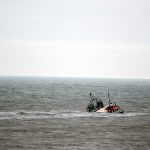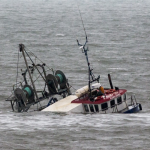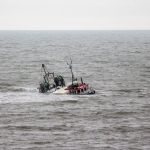USS Antietam

The 173 meter long, 9600 ton United States Ticonderoga-class guided missile cruiser USS Antietam ran aground off the port of Yokosuka, Japan. The navy ship had at anchor when high winds caused the anchor to drag. The vessel got underway to avoid being blown ashore, but it suffered a malfunction in its pitch control in both propellers. Unable to make headway, the USS Antietam was blown aground.
The missile cruiser struck bottom causing the vessel to shudder and damage the hull. No reports of injuries, but some 1100 gallons of oil was released into the sea. The USS Antietam was later towed back into port. Authorities report the US Navy was taking steps to clean up the pollution released.





